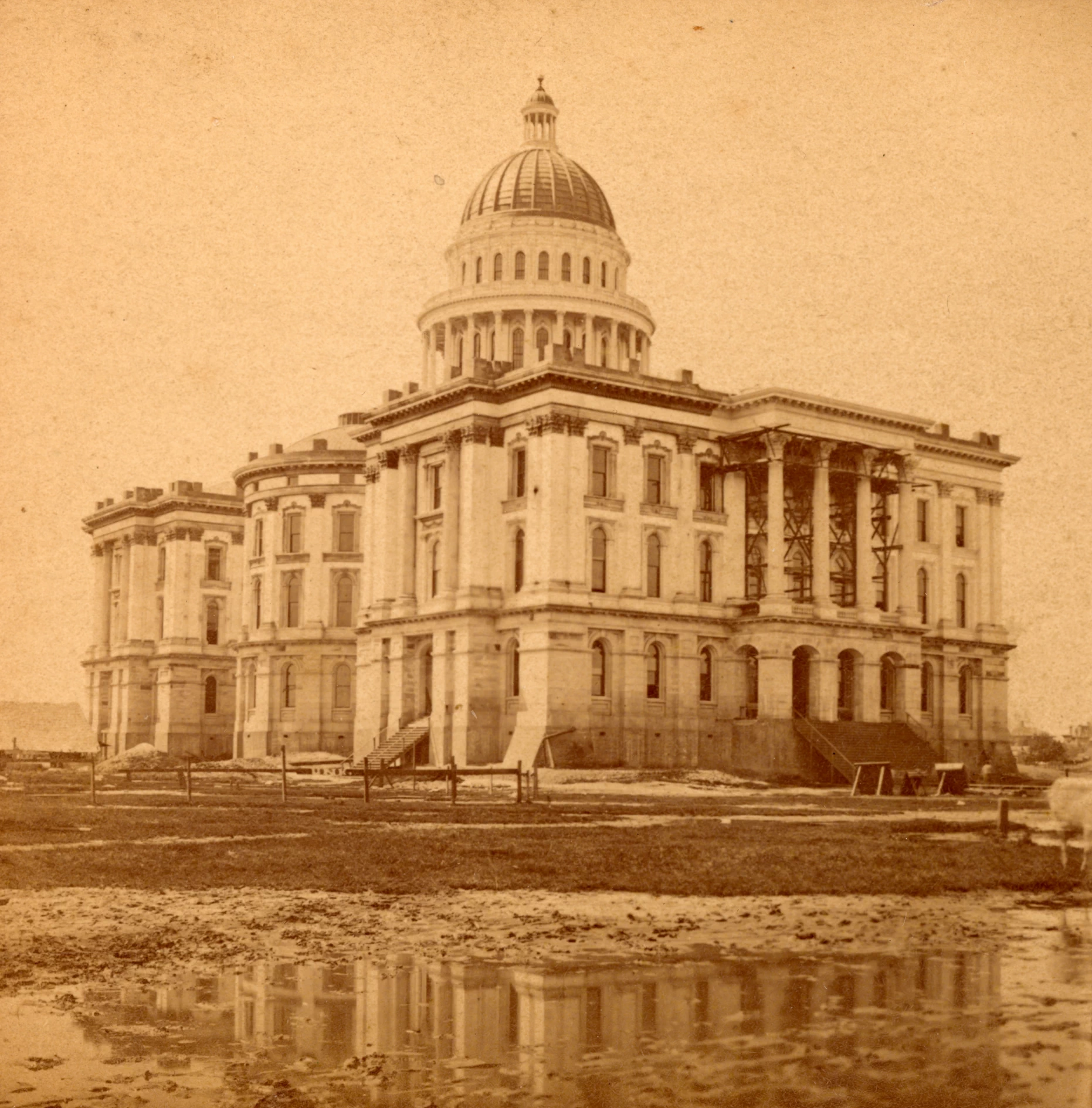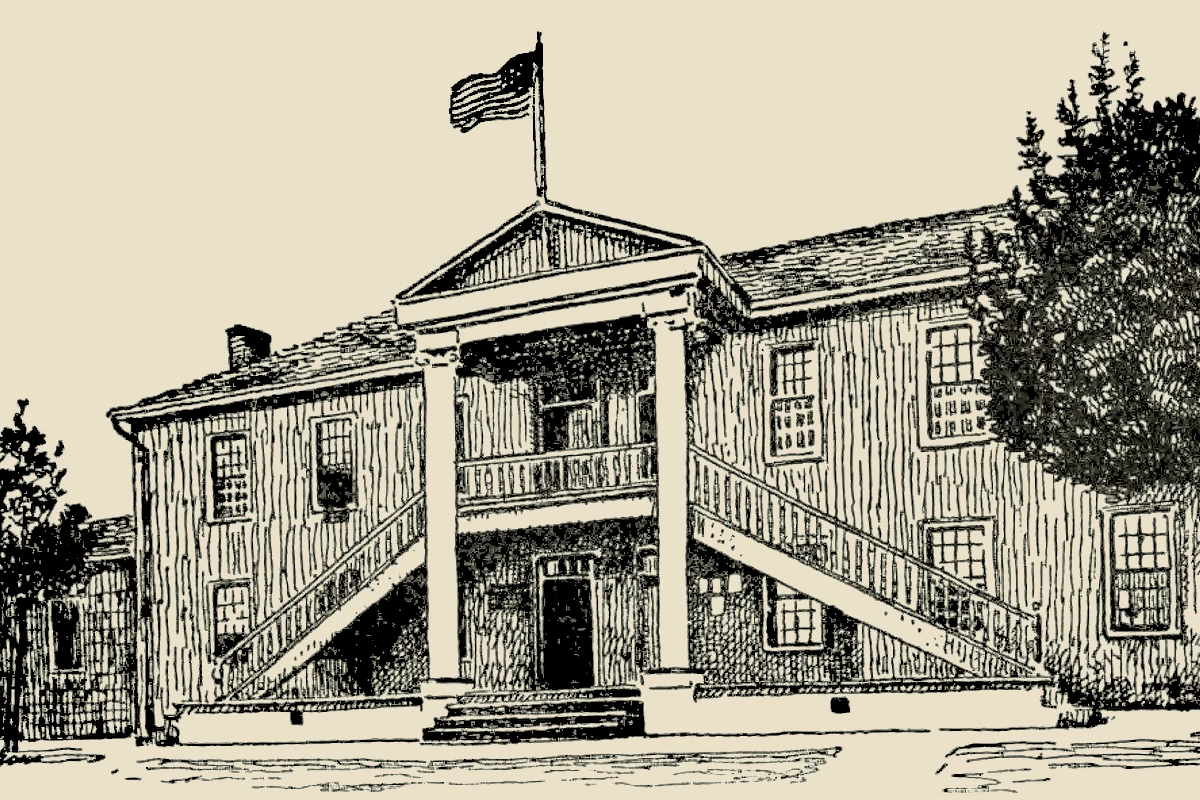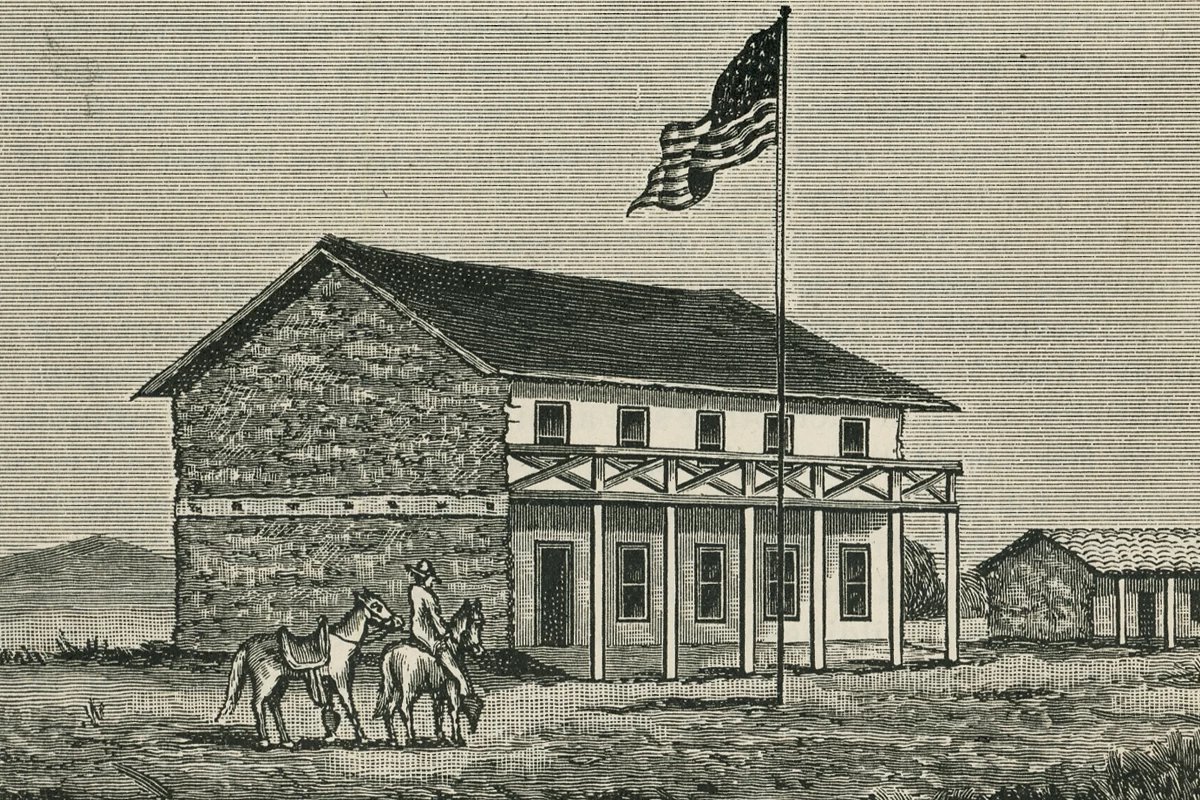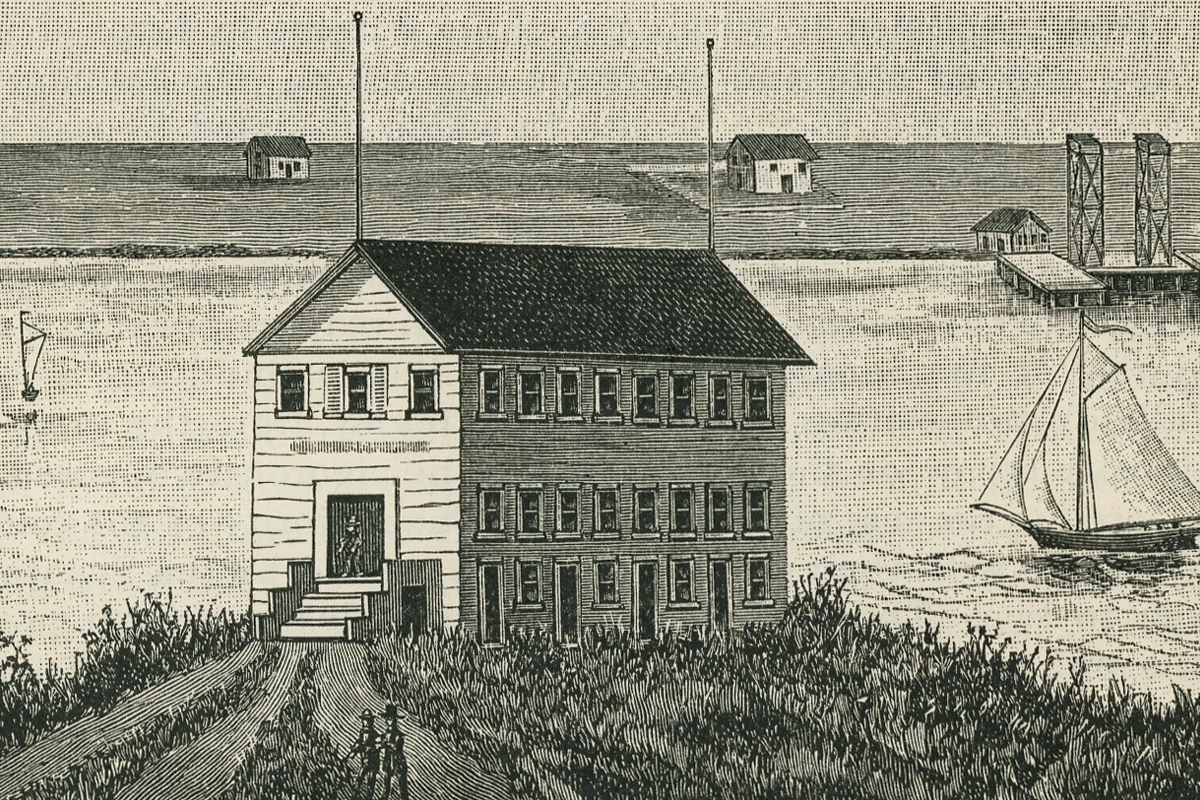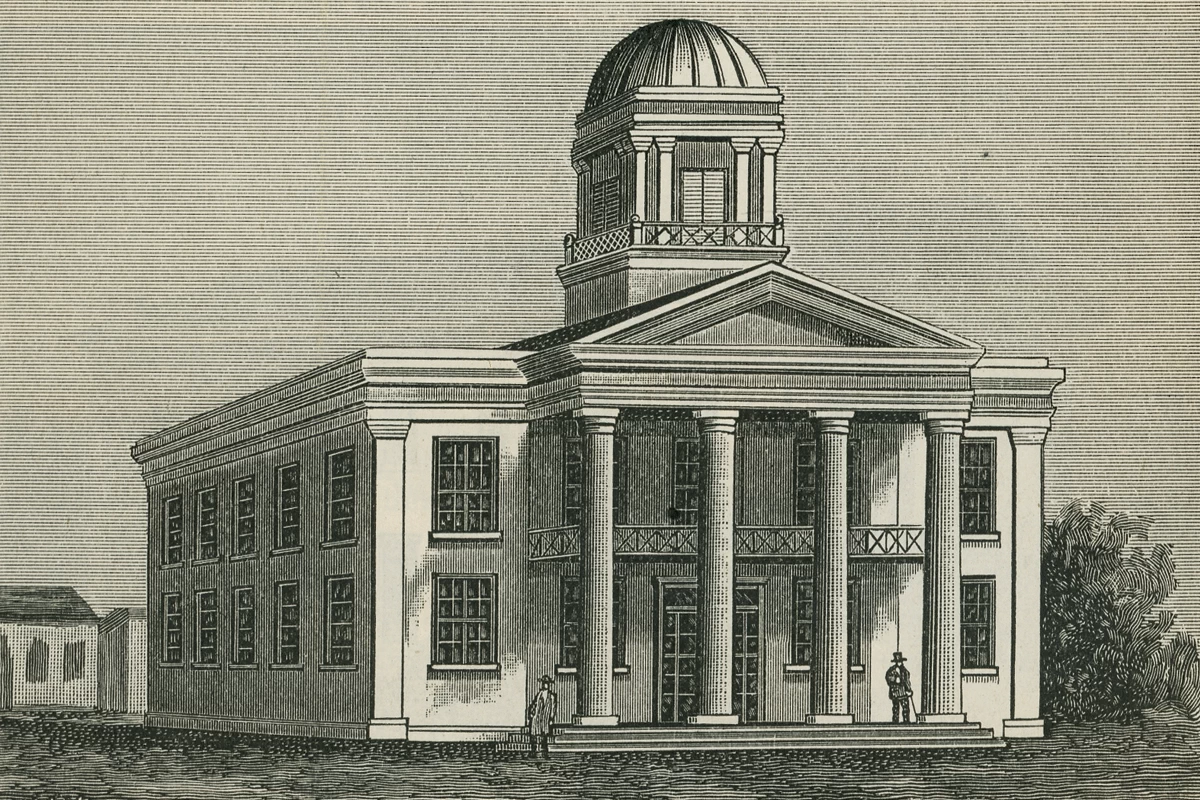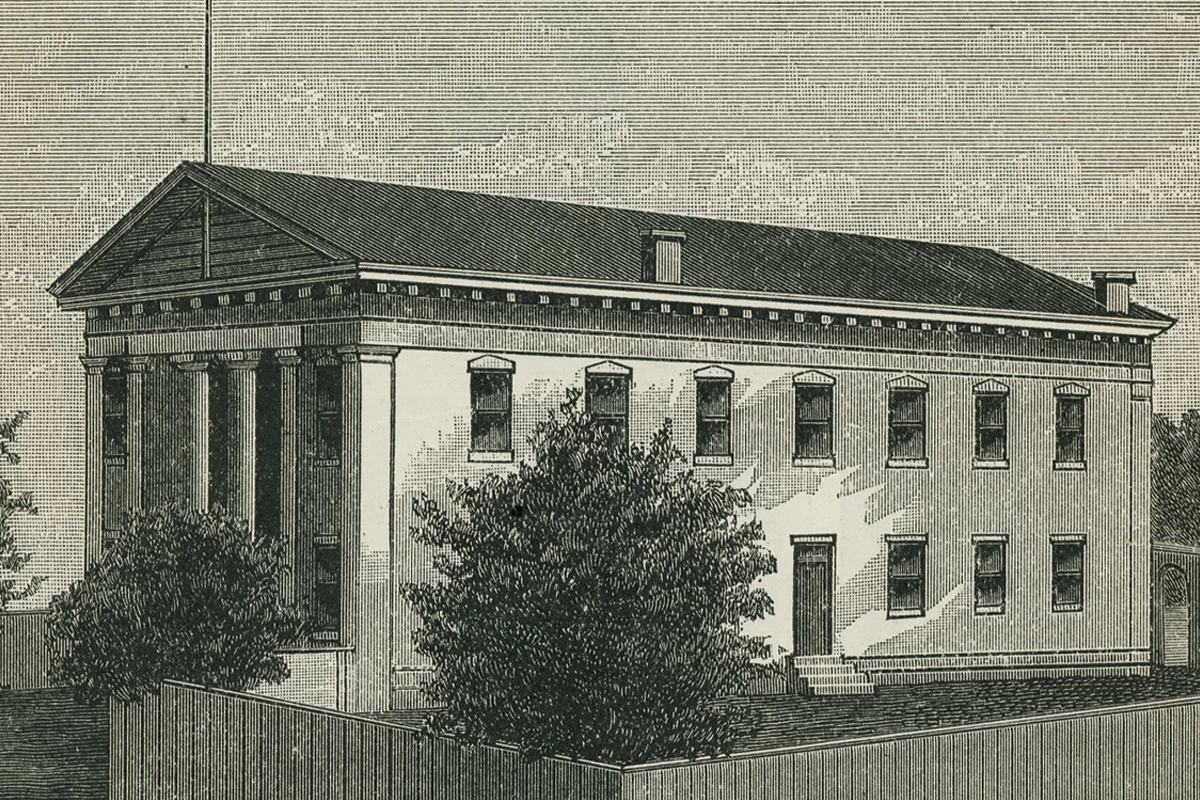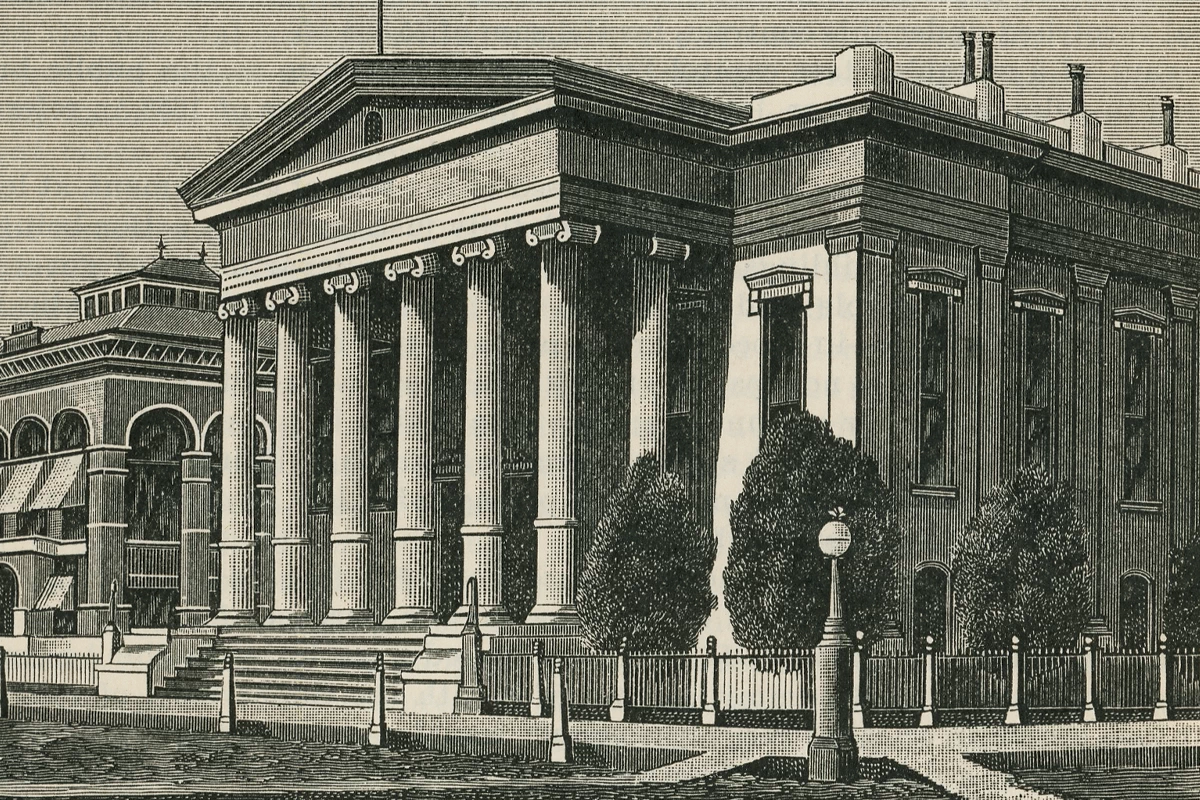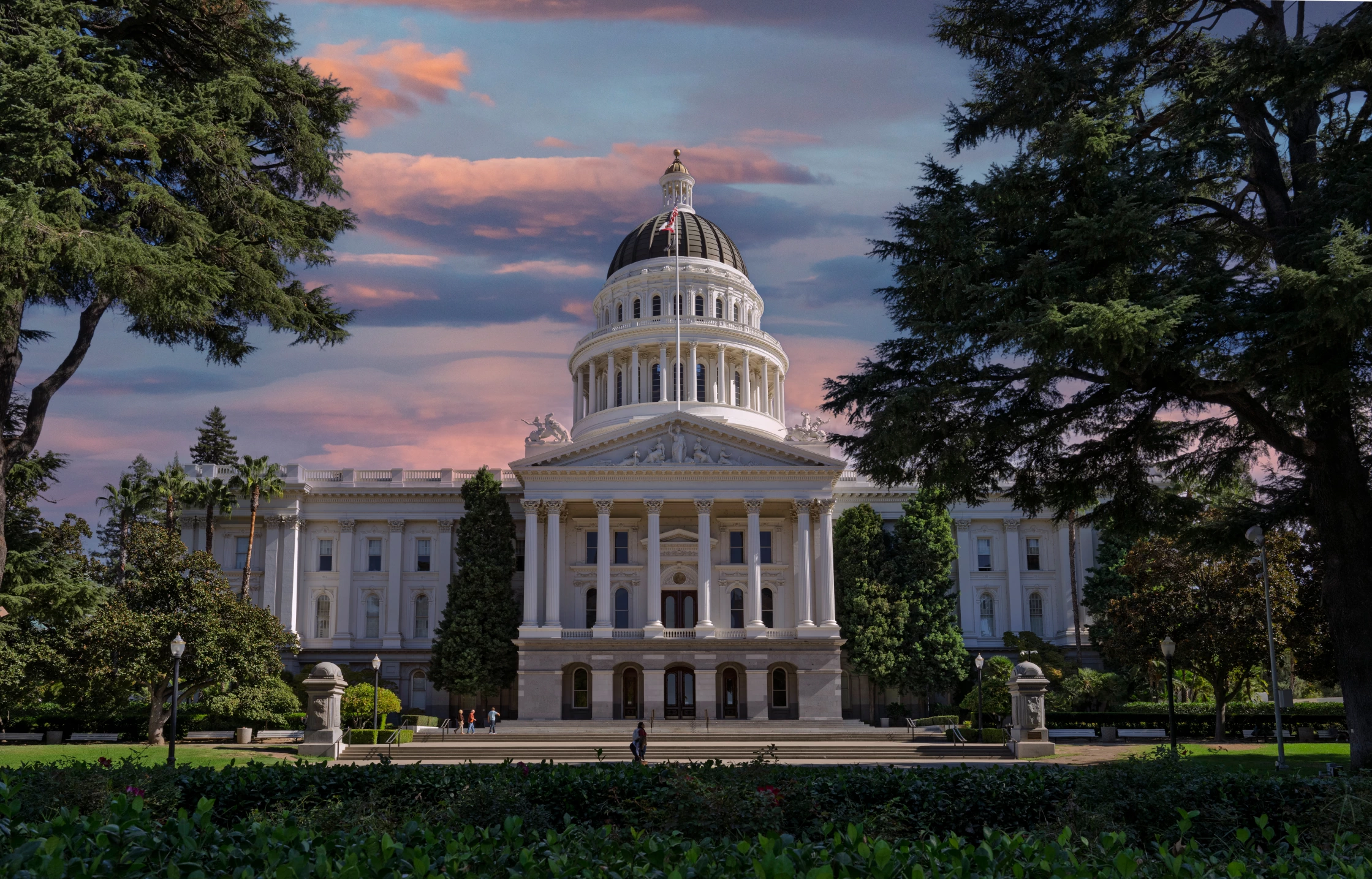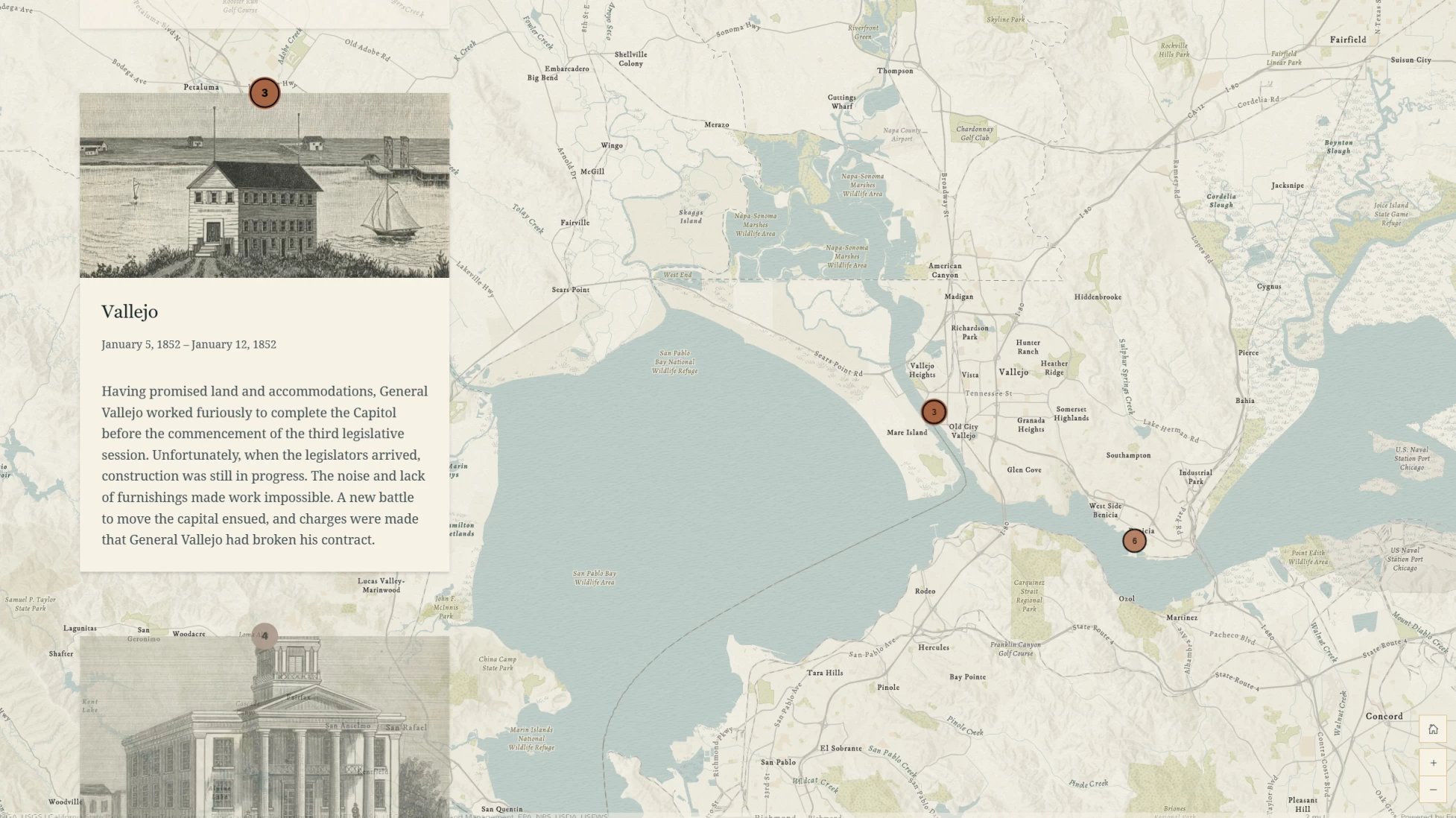Planning
Plans to establish a capital city for the newly inducted state of California were introduced at the 1849 Constitutional Convention. After years of ongoing controversy, a final site was selected, and architectural plans were completed in 1856.
Selecting Sacramento
Sacramento, one of many California capitals.
California’s State Capitol is a testament to the need to establish order out of chaos. California picked a difficult year, 1849, to begin the formation of a new government. Fortunately, a few individuals had the foresight to draft a constitution in spite of the chaotic influence of the California Gold Rush.
The immigration of thousands of “forty-niners” made achieving statehood an urgent priority. The rapidly increasing population needed organization and infrastructure. Instead of first being admitted into the United States as a territory, as was typical, California became a state right away. On September 9th, 1850, California was officially admitted by Congress as the 31st state of the Union. The state’s first task was to find an appropriate location for its new government to meet. It would take California four years to find a permanent home for the capitol.
Multiple cities in California vied for the opportunity to serve as state capital, hoping to enjoy the status and economic benefits that accompanied it. Between 1849 and 1854, the capitol would be located in four different communities – three of which were less than five years old. The seat of the state government moved to Sacramento twice: once for about four months in 1852, and permanently in 1854.
Overland transportation was difficult during this time. As a result, all the cities that acted as capitals were located near major bodies of water like the San Francisco Bay and Sacramento River. Steamboats were one of the only reliable means of travel in the state and proved essential in transporting government records and legislators from one location to the next.
Monterey
September 9, 1849 – October 13, 1849
California’s first State Constitutional Convention was held in 1849 at Colton Hall in Monterey. During the Convention, 48 delegates worked diligently to write the state’s first constitution and build the state infrastructure from scratch.
They also discussed the need for a suitable permanent location to serve as the state capital. Anticipating prestige and profit, communities from all over California made attractive offers that included free land and buildings. Despite hosting the State Constitutional Convention, Monterey was never the capital of the Golden State.
San Jose
December 13, 1849 – May 1, 1851
San Jose, the oldest city in California, was designated the first capital by the State Constitutional Convention held in Monterey. San Jose’s offer of a humble, two-storied adobe building quickly proved unsuitable for the needs of the government. The newly elected legislators and executive officers became disgruntled with the poorly lit and insufficiently ventilated accommodations.
Several additional proposals offering land, buildings, and money for construction were presented to the Legislature. Among these was a generous offer from General Mariano Vallejo, who suggested the capital be moved to the town of Vallejo. The Legislature approved this plan.
Vallejo
January 5, 1852 – January 12, 1852
January 3, 1853 – February 4, 1853
Having promised land and accommodations, General Vallejo worked furiously to complete a capitol building before the commencement of the third legislative session. Unfortunately, construction was still incomplete by the time legislators arrived. The lack of furnishings and basic amenities made conducting the regular activities of the Legislature nearly impossible.
A new battle to move the capital ensued and General Vallejo was accused of having broken his contract with the state government. In the spirit of compromise, the legislators agreed to keep the town of Vallejo as the permanent location of the capital – but the Legislature would be removed to Sacramento to finish the January 12th to May 4th, 1852 session.
Sacramento
January 16, 1852 – May 4, 1852
A steamboat was chartered, and the legislators were ferried 110 miles upriver to Sacramento to complete the third session. They met in the rented Sacramento County Courthouse until they were forced to adjourn by one of the many floods that ravaged the city.
A severe flood on March 7th, 1852 turned Sacramento into a “second Venice” and caused considerable damage to the government’s archived records. After the Legislature dispersed, these records were sent back downriver to Vallejo. The California state government earned the nickname “the floating capital.”
Benicia
February 11, 1853 – February 25, 1854
Legislators were again dissatisfied with the conditions in Vallejo upon their return in 1853. General Vallejo asked to be released from his contract because he felt the removal of the capital the previous year had damaged his reputation. The Legislature was similarly concerned that the frequent relocation of the state capital would erode the people’s confidence in their government – which was earning additional unflattering nicknames from the public, including “the capital on wheels.”
Despite these concerns, the Legislature moved up the Carquinez Strait to the new town of Benicia, which had promised them the use of their City Hall. The stately two-storied brick structure was a considerable improvement over the government’s previous locations.
Facilities and accommodations proved inadequate once more, however, and a second proposal from Sacramento would bring the legislators back to the river city for good.
Sacramento
February 28, 1854 – 1869
The first time the Legislature convened in Sacramento was on a temporary basis while construction continued in Vallejo. Unfortunately, General Vallejo’s breach of contract after the Legislature’s return made the ensuing transition difficult.
J.D. Hoppe, representing the citizens of San Jose, issued a restraining order preventing the Governor from sending the state’s archives to Sacramento. Hoppe argued that the archives were being held in the “true legal capitol” and that the Removal Act of 1851 was conditional on Vallejo fulfilling his contract. It would take two additional Removal Acts before Sacramento could officially become the seat of California’s state government in 1854.
Once relocated, the Legislature was provided ample and comfortable accommodations in the two-storied porticoed courthouse in Sacramento. Then, on July 3rd, Sacramento was consumed by flames – including the courthouse. Governor John Bigler had to convince Sacramentans to help him rescue a portrait of George Washington from the flames. A new courthouse was erected shortly after the fire, and was ready for the sixth session of the Legislature in 1855.
In 1854, a block of land (now Cesar Chavez Plaza) was donated to Sacramento to serve as a permanent site for the capitol building. Construction was stalled by litigation in 1856. Out of frustration, Sacramentans taxed themselves in order to purchase four alternative blocks of land in 1860. Construction on the Sacramento capitol building began in 1860 and was completed in 1874.
Despite the state government having found a permanent home, some legislators believed the capital should be moved again, citing flooding and other concerns. There were several unsuccessful efforts to relocate the capital to Oakland (1858-1859), San Jose (1875-1878, 1893, 1903), Berkeley (1907), and Monterey (1933-1941).
The State Capitol Timeline
Follow the evolution of the State Capitol building as it journeys across the state of California in search of a permanent home.
The State Capitol Timeline
Follow the evolution of the State Capitol building as it journeys across the state of California in search of a permanent home.


